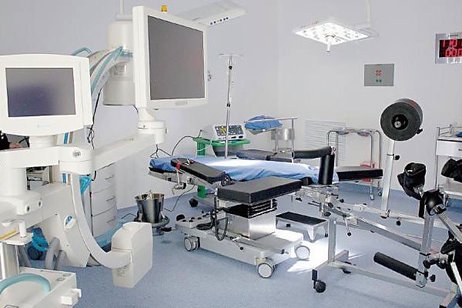Breakthrough Thinking for Hospital Electrical Systems
Published Nov-06-17Breakthrough:
Insights into the opportunities presented by the Internet of Things (IoT) for hospital electrical systems.
Company:
Schneider Electric, United States
The Story:
 As open innovation has grown and developed in recent years more and more innovators have signed up to take part in challenges, contests, and hackathons. Often, they devote a lot of time toward finding solutions for organizations but why do they do it?
As open innovation has grown and developed in recent years more and more innovators have signed up to take part in challenges, contests, and hackathons. Often, they devote a lot of time toward finding solutions for organizations but why do they do it? The possibility of financial reward is one motivating factor, perhaps the biggest for many solvers but it is by no means the only one. There is the opportunity to network with other brilliant minds, the thrill of taking part in an intellectual pursuit, the chance to raise their personal profile and come to the attention of bigger companies and the possibility of collaborating with solution seekers post-challenge.
For those that organize challenges and competitions engaging external knowledge sources can get them the solutions they need in truncated timeframes and at a relatively low cost. But open innovation is also a great way for them to scout for new talent, find collaborators and get a heads up on possible future developments in their industry, knowledge that can help them decide where to invest their innovation dollars.
Knowledge Search
These were some of the reasons why Schneider Electric launched its Healthcare Crowdsourcing Challenge. This global specialist in energy management and automation wanted to understand the opportunities for the Internet of Things (IoT) and smart edge devices in hospital electrical distribution.
The Internet of Things is basically the connecting of any object or device to the internet and each other. These interconnected items are able to collect and exchange data using embedded sensors to make our lives smarter.
Through its open innovation challenge, Schneider Electric called on engineers to better define the needs and potential impact of IoT on the design, monitoring, analytics, and maintenance of electrical distribution in hospitals.
Participants submitted their ideas to the competition's webpage and they were assessed by a panel of industry experts.
Smarter Hospitals
The winner was Chris Vail, an engineer with Kansas-based Professional Engineering Consultants (PEC). His submission ('Bridging the Gap Between Information and Efficiency’) is a way of integrating clinical systems with the core building infrastructure to create a truly smart hospital. In so doing, IoT could be used to help curb high energy demands, enhance patient satisfaction and improve the reliability of electrical systems.
One example of how the process could work would be in patient rooms where the system’s occupancy sensors would turn the lights on when sensing occupancy and turn them off when no one is there. It would also adjust the color temperatures of lighting fixtures during the day to encourage healthy sleep patterns and improve moods of staff and patients.
Vail's prize included a $10,000 cash award and recognition within the American Society for Healthcare Engineering (ASHE) and Schneider Electric networks. Meanwhile, Schneider received some valuable insights to help it going forward.
"We’d like to thank all of the teams and individuals who submitted their ideas – many of which brought to light new considerations and approaches to tackling the changing healthcare landscape with IoT and POE for energy distribution," commented Aamir Paul, senior vice president, U.S. Operations, Schneider Electric.
"It is through this ongoing engagement with the community and our partners, particularly on our EcoStruxure platform, that we will continue to innovate at every level to bring new ideas and solutions to our customers."
Next Story »

